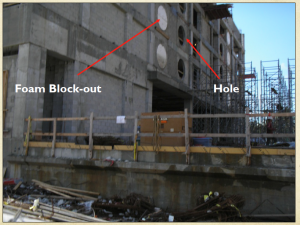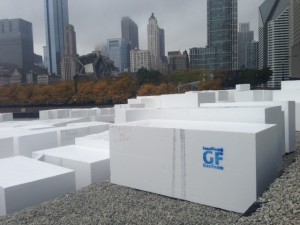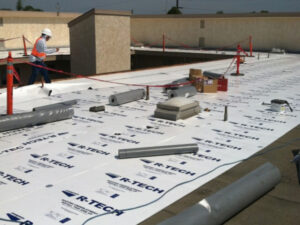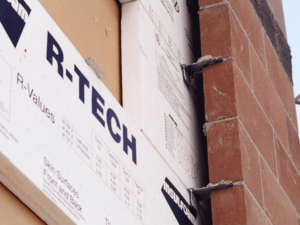Knock Outs and Block Outs

Using Expanded Polystyrene (EPS) to create unique concrete structures
Have you ever wondered how builders make “windows” in the railings of a concrete bridge or how giant concrete letters are formed? The answer may not be what you think. Concrete forms made of rigid wood or steel are often used to hold and shape hundreds to thousands of square feet of concrete at one time. But, to get those seemingly perfect concrete shapes just right, builders and contractors rely on Expanded Polystyrene (EPS) foam. This lightweight, versatile material can be used as a temporary void fill to simplify complex concrete designs.
EPS’ role in concrete construction
EPS block outs are used in place of, or in-conjunction with, wood and steel concrete forms. It can be difficult to create precise shapes and formations with a traditional concrete form. EPS can help solve this challenge when it is used to
create a physical barrier, or “block out,” for the concrete. These block outs are installed with the intention of removing, or “knocking out,” the EPS after the concrete dries, leaving behind the desired shape.
As an added benefit, using custom EPS block outs for concrete projects simplifies the job of creating air spacers to reduce structural weight and make room for utilities openings. For example, if a builder needs to make 100 3 in. x 3 in. forms to accommodate electrical box spaces in a warehouse concrete floor slab, it would be much faster to have 100 EPS block outs delivered to the jobsite for installation than to create 100 inconsistent wood forms. Rather than rely on the variability of wood and steel forms, EPS manufacturers can create consistently-sized blocks and sheets so there are no surprises when the concrete dries.
Working with EPS block outs
As a closed-cell, lightweight and resilient foam, EPS is readily available to cater to numerous designs and applications. With compressive strengths up to 50 psi, EPS has the ability to withstand the demands and weight of wet concrete while remaining easy to work with.
When it comes to architectural shapes, if it can be designed, it can be brought to life. For example, no matter how big, small, detailed or complex, Insulfoam’s custom shapes machine can create a lightweight, yet strong foundation to match nearly any design. This includes creating dramatic interior and exterior details, intricate packaging, EIFS and stucco products, as well as original equipment manufacturing (OEM) components.
Conclusion
While wood and steel concrete will always have their place as concrete forms, EPS can easily be used as temporary void fill for convenient knock outs and block outs on custom concrete projects. With careful planning, builders and contractors can create unique shapes that inspire awe or simplify an intricate concrete project.




